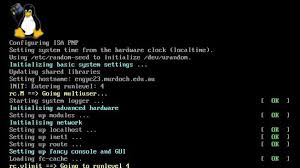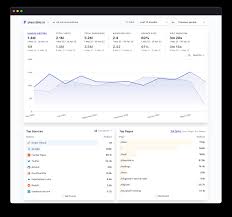Empowering Users: The Vital Role of CentOS Community Support
The Power of CentOS Community Support
CentOS, a popular Linux distribution known for its stability and reliability, owes much of its success to the vibrant and supportive community that surrounds it. The CentOS community is a diverse group of users, developers, sysadmins, and enthusiasts who come together to share knowledge, provide assistance, and contribute to the growth of this open-source project.
Support Forums and Mailing Lists
One of the cornerstones of CentOS community support is its active forums and mailing lists. Here, users can ask questions, seek advice, and engage with others facing similar challenges. Whether you’re a beginner looking for basic troubleshooting tips or an experienced user delving into complex configurations, the CentOS forums are a valuable resource for all.
IRC Channels
For real-time communication and immediate assistance, CentOS offers IRC channels where users can chat with fellow community members. These channels are not only great for getting quick help but also for engaging in discussions about the latest updates, best practices, and upcoming events related to CentOS.
Documentation and Wiki
The CentOS project maintains comprehensive documentation and a wiki that serve as repositories of knowledge for users at all levels. From installation guides to advanced configuration tutorials, these resources are invaluable for anyone seeking to understand CentOS better or troubleshoot specific issues.
Contributing to CentOS
The strength of the CentOS community lies in its collaborative spirit. Users are encouraged to contribute back to the project by reporting bugs, submitting patches, writing documentation, or participating in testing efforts. By giving back to the community, users play a vital role in shaping the future of CentOS.
Conclusion
In conclusion, the CentOS community support is not just about solving technical problems; it’s about fostering a sense of belonging and collaboration among like-minded individuals passionate about open-source software. Whether you’re seeking help or looking to give back, the CentOS community welcomes you with open arms.
Exploring the Benefits of CentOS Community Support: A Collaborative and Resourceful Network
- Active and vibrant community of users, developers, and enthusiasts
- Dedicated support forums and mailing lists for troubleshooting
- Real-time assistance available through IRC channels
- Comprehensive documentation and wiki for easy reference
- Opportunities to contribute back to the project through bug reporting and testing
- Collaborative spirit that encourages knowledge sharing and mutual assistance
Challenges with CentOS Community Support: Delays, Limited Enterprise Options, and Niche Topic Coverage
- Response times on forums may vary, leading to delays in getting assistance.
- Limited availability of official CentOS support for enterprise users who require guaranteed response times.
- Some community-provided solutions may lack thorough testing or documentation, leading to potential issues.
- Language barriers can sometimes hinder effective communication between users from different regions.
- Community support may not always cover niche or specialised topics, requiring users to seek help elsewhere.
Active and vibrant community of users, developers, and enthusiasts
The active and vibrant CentOS community of users, developers, and enthusiasts is a testament to the collaborative spirit that drives this open-source project forward. With a diverse range of individuals coming together to share knowledge, provide support, and contribute to the growth of CentOS, the community serves as a valuable resource for users at all levels. Whether you’re seeking advice on troubleshooting an issue, exploring new features, or simply engaging in discussions with like-minded individuals, the CentOS community offers a welcoming environment where everyone can learn and grow together.
Dedicated support forums and mailing lists for troubleshooting
CentOS community support stands out with its dedicated forums and mailing lists that serve as invaluable resources for troubleshooting. Users can seek assistance, share experiences, and find solutions to their technical challenges in a supportive and collaborative environment. Whether you are a novice seeking guidance or an experienced user looking to delve deeper into complex issues, the CentOS forums and mailing lists provide a platform where the community comes together to help one another navigate and overcome obstacles effectively.
Real-time assistance available through IRC channels
One significant advantage of CentOS community support is the availability of real-time assistance through IRC channels. Users can engage with knowledgeable community members instantly, making it easier to troubleshoot issues, seek advice, and stay updated on the latest developments within the CentOS ecosystem. This immediate access to support fosters a sense of community collaboration and ensures that users can address their concerns promptly, enhancing their overall experience with CentOS.
Comprehensive documentation and wiki for easy reference
The CentOS community support stands out for its provision of comprehensive documentation and a user-friendly wiki, serving as invaluable resources for users of all levels. Whether you are a novice seeking step-by-step installation guides or an experienced user exploring advanced configurations, the wealth of information available ensures easy reference and troubleshooting. The detailed documentation and wiki not only empower users to navigate CentOS effectively but also foster a culture of self-reliance and continuous learning within the community.
Opportunities to contribute back to the project through bug reporting and testing
One significant benefit of CentOS community support is the opportunity it provides for users to actively contribute back to the project by reporting bugs and participating in testing initiatives. By engaging in bug reporting, users play a crucial role in identifying and resolving issues, ultimately enhancing the overall stability and performance of CentOS. Similarly, involvement in testing activities allows users to provide valuable feedback on new features and updates, helping to ensure a more robust and reliable operating system for the entire community. This collaborative approach not only strengthens the CentOS ecosystem but also empowers users to have a direct impact on the development and improvement of the platform they rely on.
Collaborative spirit that encourages knowledge sharing and mutual assistance
The collaborative spirit within the CentOS community is a testament to its strength, as users from all backgrounds come together to share their expertise, offer mutual assistance, and foster a culture of knowledge sharing. This ethos of collaboration not only enhances the overall experience for users but also creates a supportive environment where individuals can learn from one another and collectively contribute to the growth and success of the CentOS project.
Response times on forums may vary, leading to delays in getting assistance.
One notable drawback of CentOS community support is the variability in response times on forums, which can sometimes result in delays in receiving assistance. Due to the diverse nature of the community and the voluntary nature of contributions, users may experience longer wait times before their queries are addressed. This can be frustrating for individuals seeking prompt solutions to their issues, especially when facing urgent technical challenges. Patience and persistence are key when navigating through the forums to ensure that help eventually arrives, albeit at a pace that may not always align with immediate needs.
Limited availability of official CentOS support for enterprise users who require guaranteed response times.
One significant drawback of CentOS community support is the limited availability of official support for enterprise users in need of guaranteed response times. While the CentOS community is known for its helpfulness and expertise, enterprise users often require immediate assistance and service level agreements that ensure timely resolutions to critical issues. Without official CentOS support options that offer dedicated support staff and guaranteed response times, some enterprise users may find it challenging to meet their business-critical requirements and maintain optimal system performance.
Some community-provided solutions may lack thorough testing or documentation, leading to potential issues.
One drawback of CentOS community support is that some solutions offered by community members may lack thorough testing or detailed documentation. This can result in potential issues for users who rely on these solutions, as the lack of proper testing and documentation may lead to unexpected errors or complications during implementation. It is important for users to exercise caution and discretion when considering community-provided solutions, ensuring they thoroughly understand the implications and potential risks before implementing them in their CentOS environment.
Language barriers can sometimes hinder effective communication between users from different regions.
Language barriers can pose a significant challenge within the CentOS community support network, potentially impeding effective communication between users from diverse regions. While English is commonly used as the primary language for interactions, not all users may be fluent in it, leading to misunderstandings or difficulties in conveying complex technical issues. This limitation can hinder the seamless exchange of knowledge and support within the community, highlighting the importance of promoting inclusivity and exploring ways to overcome language barriers to ensure that all users can fully benefit from the CentOS community’s resources and expertise.
Community support may not always cover niche or specialised topics, requiring users to seek help elsewhere.
While the CentOS community support is robust and diverse, one potential drawback is that it may not always cover niche or specialised topics. Users with highly specific or advanced queries may find that the community forums, mailing lists, or IRC channels do not have the expertise or resources to address their needs adequately. In such cases, users may need to look beyond the CentOS community and seek help from specialised forums, professional support services, or other sources of information to find solutions to their unique challenges.












